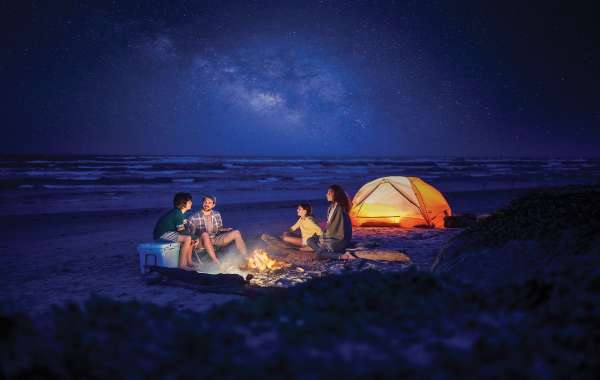A tour of different animal-centric spots from the top to the tip of Texas proved that whether on land, in the air, or under the sea, wildlife on the Gulf Coast is fascinating, accessible, abundant, and entertaining.
We were two of hundreds of people gathered on the beach, amazed and delighted as we watched newborn Kemp’s ridley sea turtles (96 from this nest at final count) start their dash for the Gulf of Mexico, bobbling along on their tiny paddle-like flippers.
This public release of hatchlings from a protected nest on South Padre Island was an example of just one of the many opportunities to interact with the wide variety of wildlife that thrives along the Texas Gulf Coast.
Hooray for the Hatchlings
Thanks to a Bi-National Recovery Plan initiated by the United States and Mexico, the once-endangered Kemp’s ridley is making a slow comeback.
South Padre, Sea Turtle Inc., is one of the groups succeeding in the effort. In 2014, they helped almost 2,000 hatchlings make it safely to Gulf waters, and nursed dozens of stranded or injured adult turtles back to health.
While there, we visited current “patients,” like Ivy, who was found embedded in the sand with an injured flipper (she was expected to fully recover and be returned to the sea), and the “residents,” those deemed unfit to survive in the wild. Two of those, Gerry and Alison, are somewhat famous, having been featured on television shows and visited by David Letterman.
It was during our visit that we learned about the hatchling release. Turns out it’s impossible to predict actual release dates—the turtles themselves decide when to make their debut—but we got the number for the Hatchling Hotline, then called at 5:30 the next morning and were in luck! One nest was in its “frenzy,” meaning ready to pop out some turtles, and that’s how we found ourselves on the beach that morning.
Most releases happen between June and August, and there’s another public hatchling release program at the northern end of Padre Island National Seashore.
Coming Face-to-Snout with Dolphins
While there isn’t a location in Texas where you can get into the water and swim with dolphins, we did learn of a place that would take us out on a boat and let wild dolphins swim up to us.
Dolphin Connection is in Ingleside, between Corpus Christi and Port Aransas. We’d secured our reservations over the phone and showed up on the dock with sunscreen, hats, and a waterproof camera.
The tours are limited to six people per trip, so there was plenty of room on the boat as the captain motored out to one of the favorite playgrounds of the dolphins. The staff at Dolphin Connection have made so many trips to these areas that they can identify about 200 individual dolphins and have named dozens of the “regulars.”
It wasn’t long before we saw them cresting in the water. The boat slowed, and a few dolphins approached it. I reached over the side, letting my hand troll through the water. Sure enough, Daisy (as identified by the captain) swam up and nuzzled my fingers, then arched her back so I could touch her slick, rubbery skin.
As I looked around the boat, I saw that everyone was having similar experiences with other dolphins. In the span of ten minutes, I saw at least a dozen of them by the boat and more circling farther out. The two children in our group squealed with glee at their unique encounter, and I knew that they, like me, would not soon forget it.
Wildlife in the Wetlands
Not all wildlife on the Gulf Coast is out to sea. With more than 1.5 million acres of coastal wetlands prairie and marsh habitats, Texas is home to entire ecosystems that nurture, feed, and provide respite for countless species of fish, amphibians, reptiles, mammals, and birds.
Not very experienced at exploring wetlands, we chose to go to Armand Bayou Nature Center, about half an hour south of Houston in Clear Lake. There we found experts who could help us with structured, safe ways to commune with the marshland creatures, which I knew included alligators and snakes, so “safe” sounded good.
We picked up a map of the center’s Discovery Loop that guided us to key venues. Strolling along the elevated boardwalk, we saw hummingbirds, turtles, chirping frogs, and a family of unbearably cute river otters. The Butterfly Garden was splendid and serene, while the live-animal sections of the center were a bit more rugged, featuring hawks, bison, and snakes.
During our ride on the Bayou Ranger, a 28-foot pontoon boat, we could hear the “hoots” of owls as our guide pointed out raccoons, nutria, deer, and—from a careful distance—an alligator, along with several of the birds that frequent the bayou, including long-legged snowy egrets, pelicans, and “pretty-in-pink” roseate spoonbills.
FUN FACT
A Kemp’s ridley sea turtle hatchling will spend anywhere from two to ten years in the ocean before returning to a marshy area near shore to eat crabs (their favorite), fish, and other mollusks as they grow into adulthood. The females then will return to the same beach on which they hatched to lay two or three clutches of approximately 100 eggs each.















